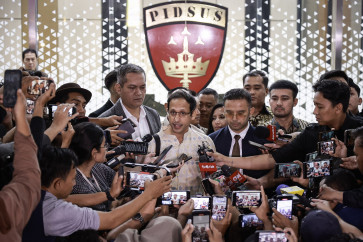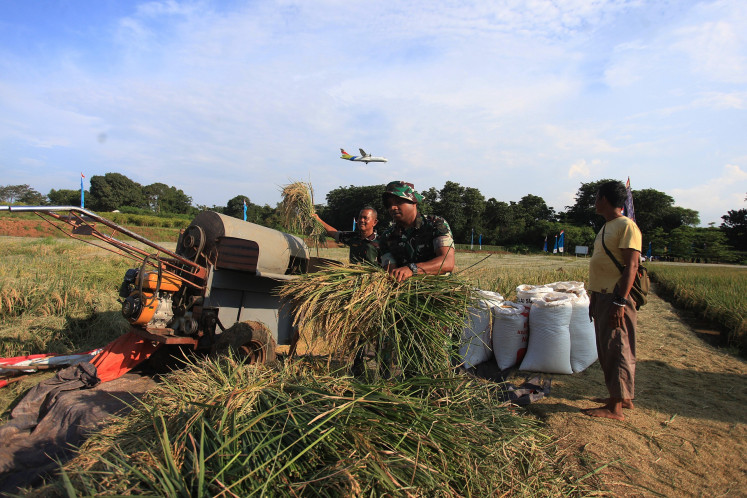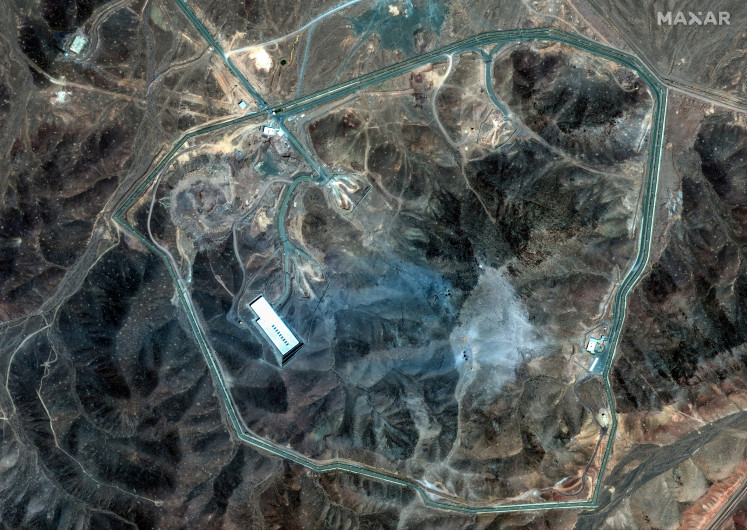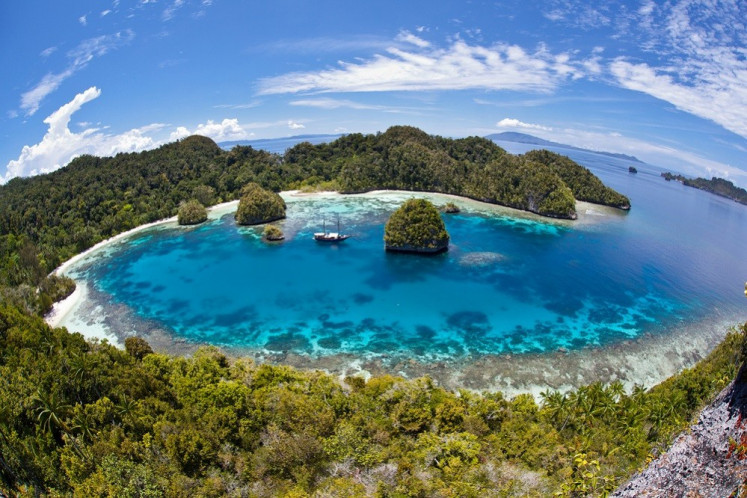Popular Reads
Top Results
Can't find what you're looking for?
View all search resultsPopular Reads
Top Results
Can't find what you're looking for?
View all search resultsFarah Wardani: Digitally preserving Indonesia's arts
(Courtesy Anang Saptoto)Yogyakarta-based art historian Farah Wardani is finding her calling in providing a bigger space to house historical pieces of Indonesian visual art
Change text size
Gift Premium Articles
to Anyone
 (Courtesy Anang Saptoto) (Courtesy Anang Saptoto)
(Courtesy Anang Saptoto) (Courtesy Anang Saptoto)
(Courtesy Anang Saptoto)
Yogyakarta-based art historian Farah Wardani is finding her calling in providing a bigger space to house historical pieces of Indonesian visual art.
Farah, 38, is the executive director of the Indonesian Visual Art Archive (IVAA), the first digital
archive of contemporary Indonesian art.
The IVAA was formerly known as the Seni Cemeti Foundation (YSC) but changed its name to IVAA in 2007 as it started to focus on documentating Indonesian art.
Since her arrival in 2006, the IVAA has become more accessible to the public. For example, in mid-2008, the foundation built a digital archiving platform, working with many art institutions across the archipelago to preserve Indonesian visual art.
'I used to be an independent curator, but there hasn't been a legitimate institution that could provide standards to lead curators. The assessment and canonization of art is still based on the relation between the collector, gallery and artists, that sometimes becomes personal,' she said. 'But through this work, I found my true calling ' to create an archive as an educational tool.'
The total collection stands at 16 million items, consisting of photographs, audio visual records, art events, research books, artist portfolios and videos collected from all over the world.
'So far, we have only uploaded around 11,000 items to our online database,' Farah said. 'I think this work will never end.'
Farah's relationship with the YSC started long before she was asked to revitalize it.
When she returned to Jakarta after finishing her masters in art history at Goldsmiths College in London, Farah was clueless as to what she wanted to do next.
She did not know many artists were out there or where to go, until she found a vacancy for an internship position at the Cemeti Art House. She applied and flew to Yogyakarta to work there.
'The situation in the year 2000 was nothing like today. There were very few art galleries and events. And unlike other professions where we could apply with a CV for certain positions, that's not the case in this industry,' said the holder of a bachelor's degree in graphic design from Trisakti University.
As an intern, Farah was able to meet many artists in Yogya, including the owners of YSC ' Mella Jaarsma, Nindityo Adipurnomo, and Agung Kurniawan ' and other artists, such as underground communities Apotik Komik and Taring Padi.
'After that experience, I was certain that I had found my calling,' Farah said.
After spending four months in Yogya, she returned to Jakarta at the request of her mother, continuing her involvement in thee art scene.
She met the director of the Ruangrupa art space, Ade Darmawan, and joined the institution in 2002, working there for three years and as a design lecturer at Paramadina University.
In 2003, she worked as a curator for the first time at Edwins Gallery, owned by Edwin Rahardjo, and became the assistant curator to Hendro Wiyanto for the solo exhibition of Heri Dono at the National Gallery in 2004.
When there was an offer to return to Yogyakarta to help develop the YSC, she jumped straight at it.
'I fell in love with Yogyakarta from the first moment I set foot there. That was one determining factor when I decided to accept the offer and move here,' she said.
Besides digital archiving at IVAA, Farah still finds time to write about art as well as movies, theater and music.
She has also published a book, titled Indonesian Women Artists: The Curtain Opens, which she wrote with Carla Bianpoen and Wulan Dirgantoro, while she worked as a consulting curator of 'Indonesian Eye: Fantasies & Realities' exhibition at Saatchi Gallery in London in 2011.
Farah was also appointed as a judge in competitions such as Film Festival Indonesia and the Jogja-Asian NETPAC Film Festival in 2012.
'Becoming a judge in competitions is a funny experience. So when people still call me a curator, I sometimes tell them that am an art judge, not a curator,' she said, laughing.
Farah is the the artistic director of the 2013 Biennale Jogja XII that will run from Nov. 16 to early January, and has invited artists from several Arab countries, such as Saudi Arabia, Egypt and Yemen, to attend.
Farah believes that she is where she is today because she was stubborn and to choose her own path despite objections from others.
Although the condition of visual arts in Indonesia has significantly improved with the emergence of numerous art galleries, art events and art lovers, Farah still longs for art history to be more appreciated.
'One of the many goals I want to achieve is to see art history become part of the mainstream public interest. Together with IVAA, I'm working toward that,' Farah said.









